Books by John Creighton
This is a bibliography of outputs to December 2024

Silchester (Calleva Atrebatum) is a Roman town in Hampshire, in central southern Britain. Unlike ... more Silchester (Calleva Atrebatum) is a Roman town in Hampshire, in central southern Britain. Unlike many the site was abandoned in the post-Roman period leaving it as a largely green-field site now. The Amphitheatre, Town Wall and some Outer Defences all remain visible for the visitor to see. The town has been highly influential in the development of Romano-British archaeology due to the large-scale excavation by the Society of Antiquaries in 1890-1908 developed an overall plan of the site.
This volume draws together for the first time all the fieldwork known to have taken place from the earliest located trenches in the 1720s up until the modern campaigns of Michael Fulford (1974-present). The cut-off date is 2013. It integrates this work with a new geophysical survey of the interior and vicinity to provide a new overarching narrative for the town.
The volume starts with a historiography of work on the city from earliest antiquarian investigations through to recent campaigns; and this sense of historiography and changing interpretations of the site permeates the later discussion, showing how new discoveries have transformed understandings.
The core of the volume contains the empirical data. Work has taken place digitising all the past excavation plans, and combining this with other datasets including: two major fieldwalking campaigns, the aerial photographic plots, landscape analysis from earlier maps from the Ordnance Survey and earlier sources, LiDAR, other mapping data, and finally with 217 ha of new geophysical prospection in and around the town. An atlas has been created which shows these data in a variety of formats, together with a detailed text outlining all the past interventions within each sheet, and providing a summary of the discoveries together with references to their later reinterpretation where relevant.
The final sections provide essays in interpretation, with thematic reviews of: the defences and linear earthworks; the development of the oppidum; the interpretation of Roman military metalwork; an interpretation of the evidence for the mortuary landscape of the town; discussions of urban infrastructure, trade, industry and pubic entertainment. Finally a narrative overview is provided seeing how the town’s remains have been interpreted within an historical setting.
There are methodological innovations differentiating the signal strength of features in the fluxgate gradiometry data to map ‘hotspots’ representing possible cremations pyre areas, middens, and industrial activities to develop our understanding of the mortuary landscape and also that of shops and workshops within the towns; these techniques could readily be applied to other large-scale surveys of Roman cities which have already been undertaken.
The work provides the first overall synthesis of the city since Boon (1974). The new work includes a significantly revised impression of the development and chronology of the earthworks surrounding the town; mapping of all the Later Iron Age finds and evidence for the development of the street grid from both excavation data and geophysics; it has discovered several new cemetery areas including a series of large Later Iron Age or early Roman burial enclosures. Features are found which may represent elusive evidence for large-scale tanning operations near the town; and there are traces on the gravel terrace edge of a series of parallel lines which may be indicative of a circus, though ground-truthing is required to test that.
The overall urban assessment and synthesis enables Silchester to be seen alongside the other recent comprehensive reviews of major cities in south-east Britain, such as Verulamium (Niblett and Thompson 2005) and Colchester (Radford et al. 2013).

IfA professional practice paper no 9, 2011
This report was paid for by English Heritage (now Historic England) and used to be behind the CIf... more This report was paid for by English Heritage (now Historic England) and used to be behind the CIfA Paywall. Their link to it however is now accessible: www.archaeologists.net/sites/default/files/Disabilitypaper.pdf
The implementation of the Disability Discrimination Act (DDA 1995 & 2005) has significantly raised the profile of employment issues and inclusion in the last few years. This in turn has led to a plethora of projects producing guidelines covering a wide range of occupations and activities. The purpose of this document is to provide specific advice on the issues surrounding disability and employment in the archaeological profession. It is a synthesis of information from four major sources
- what the anti-discrimination legislation says
- the perspective of archaeological employers
- the perspective of archaeologists with a disability
- other sources of general advice
These guidelines are not intended to provide prescriptive regulations to guide the profession: the intention is to inform the wider archaeological community of the good practice already being carried out by many employers, and to provide suggestions and guidance for improvement in practice for recruiters, managers and supervisors, and colleagues.

Internet Archaeology, 2009
This article presents the results of a pilot programme of fieldwork carried out between 2000-3 in... more This article presents the results of a pilot programme of fieldwork carried out between 2000-3 in the Arroux Valley in southern Burgundy close to Autun and Mont Beuvray. In the late Iron Age, this region was inhabited by the Aedui, an early ally of Rome, who had their principal stronghold at Mont Beuvray (Bibracte), high up in the Morvan. The 19th century excavations established this oppidum as a type-site for the European Iron Age, and since 1984 it has been the focus of an international research programme, which has greatly enhanced our knowledge of the site. In the Augustan period, Mont Beuvray was however replaced by Autun (Augustodunum) on the banks of the Arroux as the new civitas capital. It rapidly developed into one of the major cities of Roman Gaul and like Mont Beuvray has been the subject of extensive excavations. There has been far less research on rural settlement in the region. This is partly redressed here.

Creighton, J. (2006) Britannia: The Creation of a Roman Province. Routledge, Abingdon, pp180, 2006
This book re-evaluates the evidence for, and the interpretation of, the rule of the kings of Late... more This book re-evaluates the evidence for, and the interpretation of, the rule of the kings of Late Iron Age Britain: Cunobelin and Verica. Within a few generations of their reigns, after one died and the other had fled, Rome’s ceremonial centres had been transformed into the magnificence of Roman towns with monumental public buildings and Britannia examines these kings’ long-lasting legacy in the creation of Britannia.
Among the topics considered are: (1) the links between Iron Age king of Britain and Rome before the Claudian conquest; (2) the creation of the towns of Roman Britain; (3) the different natures of 'Roman identity'; (4) the long lasting influence of the kings on the development of the province; (5) the widely different ways that archaeologists have read the evidence.
Examining the kings' legacy in the creation of the Roman province of Britannia, the book examines the interface of two worlds and how much each owed to the other.
Creighton, J. (2000) Coins and Power in Late Iron Age Britain, Cambridge University Press, 249pp, 2000
This book deals with Britain in the centuries immediately before the Roman conquest: a period whe... more This book deals with Britain in the centuries immediately before the Roman conquest: a period when the first individuals appeared in British history, and when a series of dynasties emerged to take control of much of Southern Britain. Combining archaeological, literary and numismatic evidence, it paints a vivid picture of how people in Late Iron Age Britain reacted to the changing world around them, and how rulers bolstered their power through use of imagery on coins, myths, language, and material culture. It includes illustrations of 246 Iron Age coins and a separate coin index.
Journal of Roman Archaeology, 1999
A bit of a history piece now, but since the University of Durham have scanned it and put it onlin... more A bit of a history piece now, but since the University of Durham have scanned it and put it online then everyone is welcome to it!
The thesis was mainly concerned with the circulation of denarii in Britain, but also touched on copper alloy coins and radiates. The main thrust was about trying to model dynamics of circulation rather than just create bar charts of so many coins per period. Some elements of it have been published subsequently, but by no means all (e.g. in Britannia Vol 45 2014, pp 121-163).
Conferences by John Creighton
Papers by John Creighton
Informe de los resultados de las prospecciones y excavaciones del yacimiento de la antigua Celti ... more Informe de los resultados de las prospecciones y excavaciones del yacimiento de la antigua Celti (Peñaflor), al que acompaña una valoración de la historia de la ciudad, desde la Protohistoria hasta la baja Antigüedad.
Studies in Higher Education, 2011

Journal of Further and Higher Education,
This paper examines the extent to which a structured undergraduate research intervention, UROP, p... more This paper examines the extent to which a structured undergraduate research intervention, UROP, permits undergraduate students early access to legitimate peripheral participation (LPP) in a research community of practice. Accounts of placement experiences suggest that UROP affords rich possibilities for engagement with research practice. Undergraduates tread a path of gaining access to mature practice while also building their own independence, participating in work that they see matters to the community and making gains in use of a shared research repertoire. Students place UROP experiences in a contrasting frame to research exercises experienced during degree programmes; their sense of the authenticity of the research experienced through UROP emerges as a key element of these accounts. The data generate the interesting question that the degree of engagement with mature practice may account for more of the gain from UROP than simply the quantity of contact other researchers.
NEW STUDIES IN ARCHAEOLOGY Series Editors Wendy Ashmore, University of Pennsylvania Clive Gamble,... more NEW STUDIES IN ARCHAEOLOGY Series Editors Wendy Ashmore, University of Pennsylvania Clive Gamble, University of Southampton John O'Shea, University of Michigan Colin Renfrew, University of Cambridge Archaeology has made enormous advances recently, ...
Britannia, 2017
North Leigh Roman villa ranks as one of the largest known courtyard villas of Roman Britain. This... more North Leigh Roman villa ranks as one of the largest known courtyard villas of Roman Britain. This paper reassesses aspects of the site integrating a new geophysical survey with past excavation evidence.

Britannia, May 30, 2014
Hoards of denarii are common in Britain and the number which have been recorded in detail means t... more Hoards of denarii are common in Britain and the number which have been recorded in detail means that it is now possible to suggest reasonably accurately what a ‘normal’ hoard of a particular date should look like. That being the case, we can then look for variation around that norm and both investigate and speculate what that variation means. A methodology is developed which suggests periods of faster and less rapid coin circulation which has implications for consideration of monetisation. The model also enables us to view where denarii entered circulation; unsurprisingly the army looms large in this picture. The methodology is directly transferable to other provinces and other periods where there are long-lived, relatively stable monetary systems.
CIte as: John Creighton. The Supply and Movement of Denarii in Roman Britain . Britannia, available on CJO2014. doi:10.1017/S0068113X14000282.
European Journal of Archaeology, 2013
Written by a group of fieldworkers, this paper explores the nature and chronology of La Tène and ... more Written by a group of fieldworkers, this paper explores the nature and chronology of La Tène and early Roman unenclosed agglomerations in central-eastern France. It has been prompted by the discovery of a c. 115 ha La Tène D2b/Augustan (c. 50 bc to ad 15) site close to Bibracte in the Morvan, located around the source of the River Yonne. This complex provides a new perspective on the chronology and role of Late La Tène and early Roman unenclosed settlements, adding further complexity to the story of the development of Late La Tène oppida. It indicates that these ‘agglomerations’ followed remarkably varied chronological trajectories, raising important issues concerning the nature of landscape and social change at the end of the Iron Age.

Journal of Further and Higher Education, 2013
This paper examines the extent to which a structured undergraduate research intervention, UROP, p... more This paper examines the extent to which a structured undergraduate research intervention, UROP, permits undergraduate students early access to legitimate peripheral participation (LPP) in a research community of practice. Accounts of placement experiences suggest that UROP affords rich possibilities for engagement with research practice. Undergraduates tread a path of gaining access to mature practice while also building their own independence, participating in work that they see matters to the community and making gains in use of a shared research repertoire. Students place UROP experiences in a contrasting frame to research exercises experienced during degree programmes; their sense of the authenticity of the research experienced through UROP emerges as a key element of these accounts. The data generate the interesting question that the degree of engagement with mature practice may account for more of the gain from UROP than simply the quantity of contact other researchers.

Studies in Higher Education, 2011
Undergraduate research opportunity programmes (UROP) are common in North America where research h... more Undergraduate research opportunity programmes (UROP) are common in North America where research has confirmed their benefits. These schemes are gaining ground in the UK, and this article provides evidence for how UK students are benefiting from the experience. Results suggest UROP makes a significant contribution to the research capabilities and confidence of participating students, boosting their understanding of both research and their own subjects. Whilst offering considerable benefits to student learning, there is no evidence that UROP schemes on their current small scale attract additional students to postgraduate research, since the majority that participate are already interested in postgraduate study. However, at an individual level, most students report increased confidence and appreciation of the realities of the research process, and desire to progress on to postgraduate study following the placement, indicating that schemes may have the potential to cultivate new research confidence and interest if expanded.
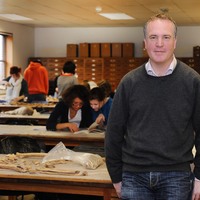
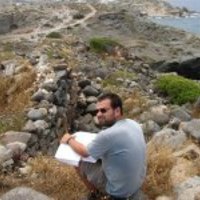
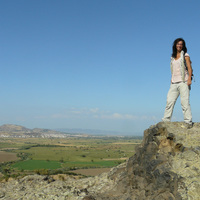





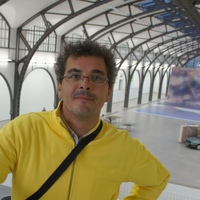

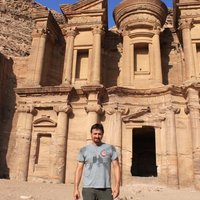
Uploads
Books by John Creighton
This volume draws together for the first time all the fieldwork known to have taken place from the earliest located trenches in the 1720s up until the modern campaigns of Michael Fulford (1974-present). The cut-off date is 2013. It integrates this work with a new geophysical survey of the interior and vicinity to provide a new overarching narrative for the town.
The volume starts with a historiography of work on the city from earliest antiquarian investigations through to recent campaigns; and this sense of historiography and changing interpretations of the site permeates the later discussion, showing how new discoveries have transformed understandings.
The core of the volume contains the empirical data. Work has taken place digitising all the past excavation plans, and combining this with other datasets including: two major fieldwalking campaigns, the aerial photographic plots, landscape analysis from earlier maps from the Ordnance Survey and earlier sources, LiDAR, other mapping data, and finally with 217 ha of new geophysical prospection in and around the town. An atlas has been created which shows these data in a variety of formats, together with a detailed text outlining all the past interventions within each sheet, and providing a summary of the discoveries together with references to their later reinterpretation where relevant.
The final sections provide essays in interpretation, with thematic reviews of: the defences and linear earthworks; the development of the oppidum; the interpretation of Roman military metalwork; an interpretation of the evidence for the mortuary landscape of the town; discussions of urban infrastructure, trade, industry and pubic entertainment. Finally a narrative overview is provided seeing how the town’s remains have been interpreted within an historical setting.
There are methodological innovations differentiating the signal strength of features in the fluxgate gradiometry data to map ‘hotspots’ representing possible cremations pyre areas, middens, and industrial activities to develop our understanding of the mortuary landscape and also that of shops and workshops within the towns; these techniques could readily be applied to other large-scale surveys of Roman cities which have already been undertaken.
The work provides the first overall synthesis of the city since Boon (1974). The new work includes a significantly revised impression of the development and chronology of the earthworks surrounding the town; mapping of all the Later Iron Age finds and evidence for the development of the street grid from both excavation data and geophysics; it has discovered several new cemetery areas including a series of large Later Iron Age or early Roman burial enclosures. Features are found which may represent elusive evidence for large-scale tanning operations near the town; and there are traces on the gravel terrace edge of a series of parallel lines which may be indicative of a circus, though ground-truthing is required to test that.
The overall urban assessment and synthesis enables Silchester to be seen alongside the other recent comprehensive reviews of major cities in south-east Britain, such as Verulamium (Niblett and Thompson 2005) and Colchester (Radford et al. 2013).
The implementation of the Disability Discrimination Act (DDA 1995 & 2005) has significantly raised the profile of employment issues and inclusion in the last few years. This in turn has led to a plethora of projects producing guidelines covering a wide range of occupations and activities. The purpose of this document is to provide specific advice on the issues surrounding disability and employment in the archaeological profession. It is a synthesis of information from four major sources
- what the anti-discrimination legislation says
- the perspective of archaeological employers
- the perspective of archaeologists with a disability
- other sources of general advice
These guidelines are not intended to provide prescriptive regulations to guide the profession: the intention is to inform the wider archaeological community of the good practice already being carried out by many employers, and to provide suggestions and guidance for improvement in practice for recruiters, managers and supervisors, and colleagues.
Among the topics considered are: (1) the links between Iron Age king of Britain and Rome before the Claudian conquest; (2) the creation of the towns of Roman Britain; (3) the different natures of 'Roman identity'; (4) the long lasting influence of the kings on the development of the province; (5) the widely different ways that archaeologists have read the evidence.
Examining the kings' legacy in the creation of the Roman province of Britannia, the book examines the interface of two worlds and how much each owed to the other.
The thesis was mainly concerned with the circulation of denarii in Britain, but also touched on copper alloy coins and radiates. The main thrust was about trying to model dynamics of circulation rather than just create bar charts of so many coins per period. Some elements of it have been published subsequently, but by no means all (e.g. in Britannia Vol 45 2014, pp 121-163).
Conferences by John Creighton
Papers by John Creighton
CIte as: John Creighton. The Supply and Movement of Denarii in Roman Britain . Britannia, available on CJO2014. doi:10.1017/S0068113X14000282.
This volume draws together for the first time all the fieldwork known to have taken place from the earliest located trenches in the 1720s up until the modern campaigns of Michael Fulford (1974-present). The cut-off date is 2013. It integrates this work with a new geophysical survey of the interior and vicinity to provide a new overarching narrative for the town.
The volume starts with a historiography of work on the city from earliest antiquarian investigations through to recent campaigns; and this sense of historiography and changing interpretations of the site permeates the later discussion, showing how new discoveries have transformed understandings.
The core of the volume contains the empirical data. Work has taken place digitising all the past excavation plans, and combining this with other datasets including: two major fieldwalking campaigns, the aerial photographic plots, landscape analysis from earlier maps from the Ordnance Survey and earlier sources, LiDAR, other mapping data, and finally with 217 ha of new geophysical prospection in and around the town. An atlas has been created which shows these data in a variety of formats, together with a detailed text outlining all the past interventions within each sheet, and providing a summary of the discoveries together with references to their later reinterpretation where relevant.
The final sections provide essays in interpretation, with thematic reviews of: the defences and linear earthworks; the development of the oppidum; the interpretation of Roman military metalwork; an interpretation of the evidence for the mortuary landscape of the town; discussions of urban infrastructure, trade, industry and pubic entertainment. Finally a narrative overview is provided seeing how the town’s remains have been interpreted within an historical setting.
There are methodological innovations differentiating the signal strength of features in the fluxgate gradiometry data to map ‘hotspots’ representing possible cremations pyre areas, middens, and industrial activities to develop our understanding of the mortuary landscape and also that of shops and workshops within the towns; these techniques could readily be applied to other large-scale surveys of Roman cities which have already been undertaken.
The work provides the first overall synthesis of the city since Boon (1974). The new work includes a significantly revised impression of the development and chronology of the earthworks surrounding the town; mapping of all the Later Iron Age finds and evidence for the development of the street grid from both excavation data and geophysics; it has discovered several new cemetery areas including a series of large Later Iron Age or early Roman burial enclosures. Features are found which may represent elusive evidence for large-scale tanning operations near the town; and there are traces on the gravel terrace edge of a series of parallel lines which may be indicative of a circus, though ground-truthing is required to test that.
The overall urban assessment and synthesis enables Silchester to be seen alongside the other recent comprehensive reviews of major cities in south-east Britain, such as Verulamium (Niblett and Thompson 2005) and Colchester (Radford et al. 2013).
The implementation of the Disability Discrimination Act (DDA 1995 & 2005) has significantly raised the profile of employment issues and inclusion in the last few years. This in turn has led to a plethora of projects producing guidelines covering a wide range of occupations and activities. The purpose of this document is to provide specific advice on the issues surrounding disability and employment in the archaeological profession. It is a synthesis of information from four major sources
- what the anti-discrimination legislation says
- the perspective of archaeological employers
- the perspective of archaeologists with a disability
- other sources of general advice
These guidelines are not intended to provide prescriptive regulations to guide the profession: the intention is to inform the wider archaeological community of the good practice already being carried out by many employers, and to provide suggestions and guidance for improvement in practice for recruiters, managers and supervisors, and colleagues.
Among the topics considered are: (1) the links between Iron Age king of Britain and Rome before the Claudian conquest; (2) the creation of the towns of Roman Britain; (3) the different natures of 'Roman identity'; (4) the long lasting influence of the kings on the development of the province; (5) the widely different ways that archaeologists have read the evidence.
Examining the kings' legacy in the creation of the Roman province of Britannia, the book examines the interface of two worlds and how much each owed to the other.
The thesis was mainly concerned with the circulation of denarii in Britain, but also touched on copper alloy coins and radiates. The main thrust was about trying to model dynamics of circulation rather than just create bar charts of so many coins per period. Some elements of it have been published subsequently, but by no means all (e.g. in Britannia Vol 45 2014, pp 121-163).
CIte as: John Creighton. The Supply and Movement of Denarii in Roman Britain . Britannia, available on CJO2014. doi:10.1017/S0068113X14000282.
Keywords: Augustus; Britain; Herod; Noricum